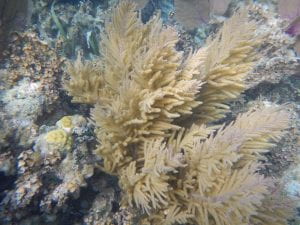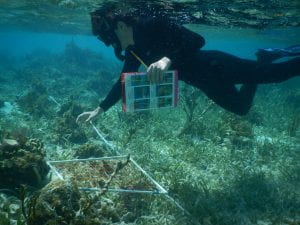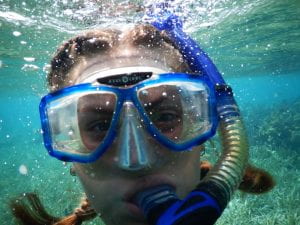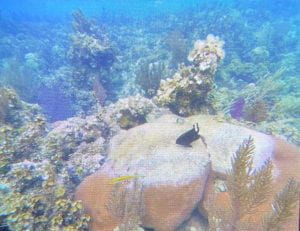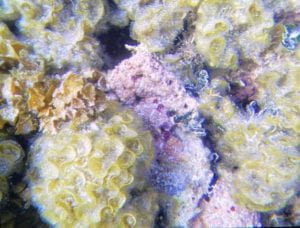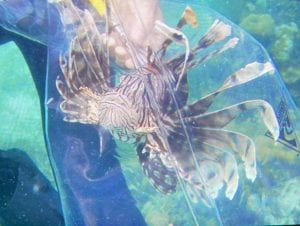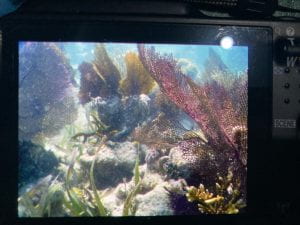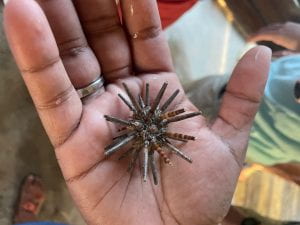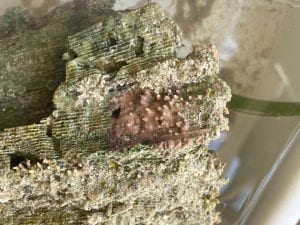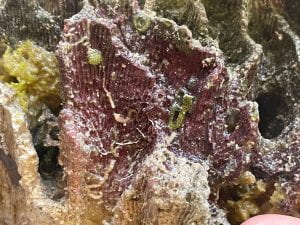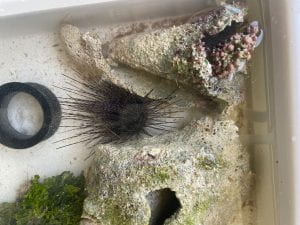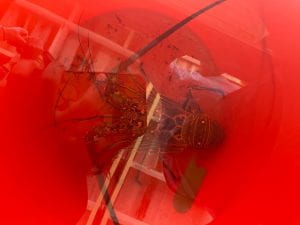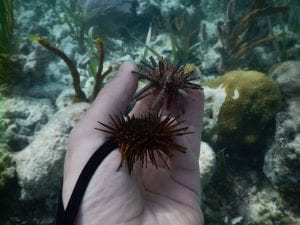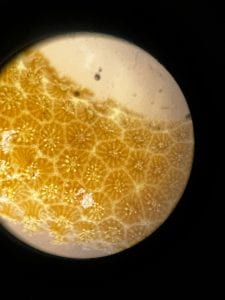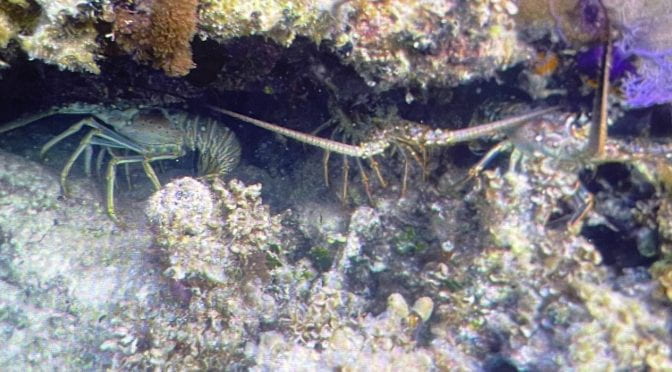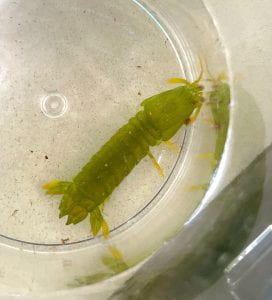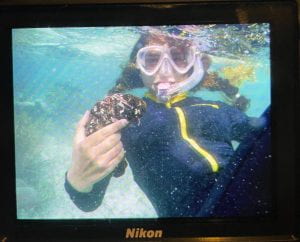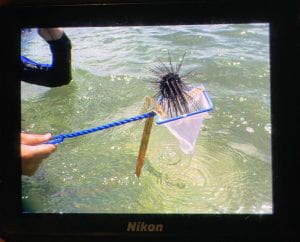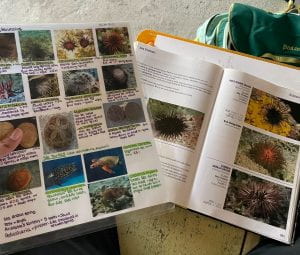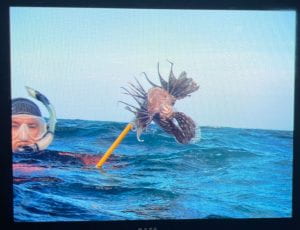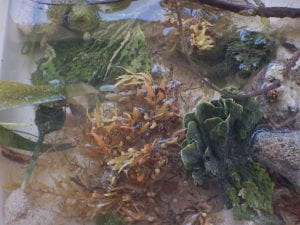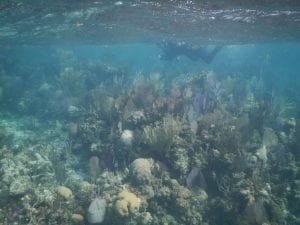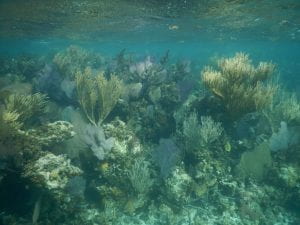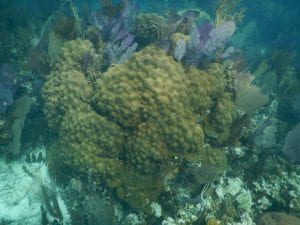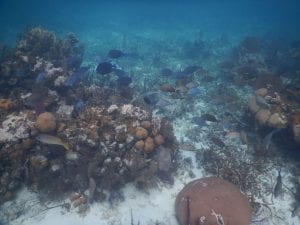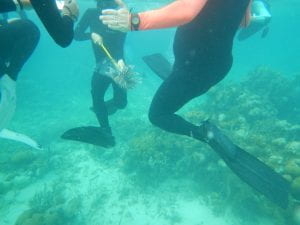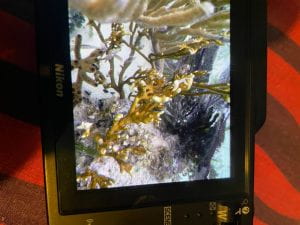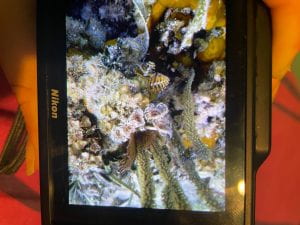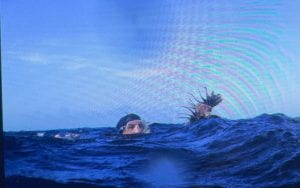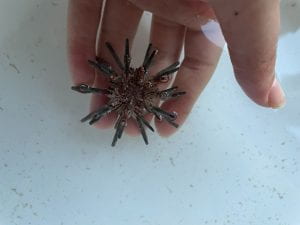Today we continued our project monitoring urchin populations and live coral cover in the Marine Protected Area (MPA). We started the morning off taking the boat our to a patch reef near Long Key, where we collected our first set of data. This went much more smoothly than our first attempt at data collection yesterday, as the reef was a bit deeper and the waves were much calmer. While we were here I saw lots of diseased common sea fans, but also a bunch of other healthy looking soft corals. Today was the first day I was able to see and recognize sea plumes (a type of soft coral) although I couldn’t quite figure out the species! The largest contrasts between this patch reef, and the one we visited yesterday outside the MPA, was that this reef had far more macro algae and also a lot more fish!
Here is a picture of the sea plume!
Here is a picture of my snorkel partner taking data!
We also surveyed a second patch reef inside the MPA this morning, although this one was a bit more difficult. The water was quite shallow, so we were attempting to float right above the reef as we lay down our tools and measured live coral cover. However, there was a ton of bright red fire sponge all throughout the reef! As we’ve learned over the past 4 days, if it says ‘fire’ in the name, its probably best to avoid touching it!! So we had to do some tricky maneuvering to avoid touching the reef floor and possibly some fire coral while floating just slightly above it! Luckily both Michiel, my snorkel partner, and I survived unscathed. After collecting coral cover data, we collected urchins, and today I was able to find 2 little ones hiding underneath some coral rubble!
Although I avoided the fire sponge, I found out upon arrival back at Glover’s Reef Research Station that I had sunburned my scalp on the boat! Also both Michiel and I had accidentally tanned our hands at least a shade darker than the rest of our bodies (that were covered by our Lycra suits).
Tomorrow, I will definitely remember to wear my hat!
– Ava (here’s a good underwater selfie for the fans… common sea fans and otherwise)

